MEETING SOLUTIONS IN FOCUS
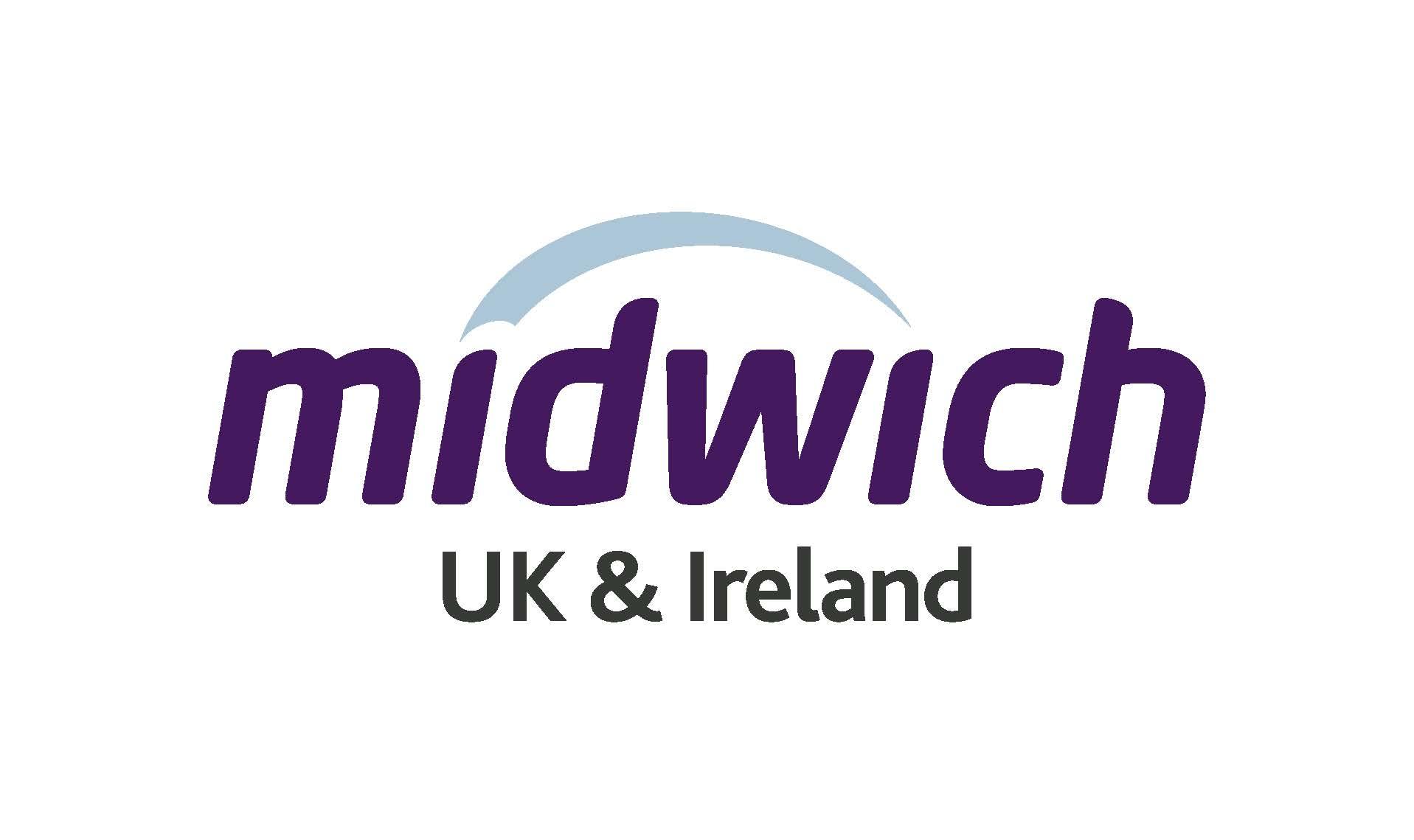

MIDWICH MAGAZINE | SPRING 2021
connected
The workplace has never looked like it currently does. Extended periods of closure followed by hybrid working with a limited part of the workforce granted access. When offices are open, they feature one-way systems and sanitation stations, however post-pandemic businesses are looking to improve workforce effectiveness.
After newly imposed safety guidelines during the pandemic, workspaces needed to adapt. Technology helped meeting spaces adapt to facilitate virtual meetings, temperature testing ensured on-site staff were safe and digital signage helped promote social distancing messages.
Many companies look set to continue offering home working, at least to a proportion of their staff, meaning workplaces will be looking for solutions that help on-site workers stay safe, feel connected and promote effective hybrid-meetings. Effective collaboration between on-site and remote workers has never been more important.


 Hannah Moody | Editor
Hannah Moody | Editor

workplace
in this issue...
UC&C in the Workplace 3 The Future of Technology in the Workplace 4 How to
Effective
Meetings 6 Embracing
in
8 Review;
10 Looking at
12 BYOM
and Powerful Productivity 14 Work
16 Meet
Allows 18 Unlocking
Service 19 we come av b-techmounts Hold your meetings to a higher standard LEARN MORE with BTECH mounts Terms and Conditions: All transactions are in accordance with our full terms and conditions, a copy of which is available upon request. All trademarks are the property of their respective manufacturers. E&OE. Your calls may be recorded for training or demonstration purposes. Copyright © Midwich 2021. Midwich Ltd, Vinces Road, Diss, Norfolk IP22 4YT. A582-Q420-DT www.midwich,com | 01379 649200
Why
Host
Virtual
Technological Change
2021
DTEN ME
Meeting Spaces Post-Pandemic
- the Key to Seamless
Smarter, Not Harder
with More People than Teams
Workplace Flexibility with Hardware as a
why UC&C in the
workplace
Corporate is the largest sector of the Pro AV audience1 and over the past year, the pandemic has forced them to accelerate investment in their UC&C strategies. Unified communication and collaboration (UC&C) is the integration of communication methods with collaboration tools. As the Coronavirus pandemic imposed social distancing and forced remote working, businesses had to adapt their UC&C strategy to support not just hybrid working but complete WFH workforces.
Despite the pandemic demanding businesses race to upgrade their UC&C strategy, this is not something that will be abandoned in a post-pandemic world. The past year has highlighted to businesses how a well-implemented UC&C strategy can help enable hybrid working, reduce business travel, increase productivity, and reduce costs. It is not just businesses that will drive the continued implementation of UC&C in the workforce, 72% of workers want a hybrid remote-office model moving forward. 2
The need for office-based interaction is still prevalent, even by those who love remote working. Hybrid working gives people the autonomy to decide where, when and how they work best, balancing work and life around their needs 3. In theory, hybrid working also enables a business to focus on their productivity, output, delivery and value, and with a well-executed UC&C strategy, it can become a reality.
As we continue to see growth in the hybrid workforce, and with 67% of organisations moving significant portions of their unified communications solutions to the cloud4, the need for technologies that are easier to use and quicker to implement become key. Collaborative hardware, cloud communication and collaborative software are all areas which businesses will look to invest in, creating the fluidity between H/O and OFC.
Against businesses being hit hard financially during the pandemic, 34% of businesses are increasing their UC&C budgets in 20215. This rise in capital could come from a decrease in other budgets, as businesses shift their focus away from travel expenses and into hybrid working. Of UC&C technology, the two biggest sectors for growth are cloud communications and collaboration.6
After the unpredictability of 2020, the short-term changes of technology shifts and collaborative systems were a must. Businesses are now looking to invest in technology that is going to enable their hybrid workforces for the foreseeable future, with communication technology that is easy to use and implement. Technology must also develop and evolve with the business, integrating with a wide choice of operating systems. UC&C strategies have never been more important to a business.
1: https://www.avnetwork.com/news/global-pro-av-growth-to-resume-in-2021-according-to-avixa-iota#:~:text=The%20corporate%20market%20continues%20to,in%20revenues%20globally%20in%202020.
2: https://www.bbc.com/worklife/article/20201023-coronavirus-how-will-the-pandemic-change-the-way-we-work
3: https://www.uctoday.com/unified-communications/is-hybrid-working-the-new-normal/

4: https://callharbor.com/2020/09/29/the-unified-communications-industry-in-2020-facts-stats/#:~:text=40%25%20of%20the%20global%20video,application%20and%20unified%20communication%20adoption
5, 6: https://evessio.s3.amazonaws.com/customer/8c4659ee-526a-4e9c-89dc-f6f4c3c1a789/event/92ee54ce-9fbb-44ab-94bc-d2c0740e5b26/media/General_Content/b6e95b2f-node_Market_Insight_Report__-_Dec_2020_FINAL.pdf

OF
the
WORKPLACE TECHNOLOGY
Decades of traditional workplace culture is about to be overturned, as technology paves the way for improved practices to take over.
The pandemic forced businesses to accelerate their investment in collaboration technology, freeing them from inefficient processes and unproductive meetings. This change in technological needs will facilitate transforming offices into collaboration hubs that enable hybrid work in healthy workspaces.
The driving force for change in the workplace will be the desire for hybrid working in a postpandemic world, a desire that will come from both the employees and employers. Most employees don’t want to return to how offices used to be either, only 12% want to return to the office full time1, with 72% of employees craving a hybrid remote-office model moving forward2 Hybrid Working will Force Change.
Face-to-face interactions remain an integral part of every-day business, they can help in building relationships and help solve problems. With a blend of the workforce working from home and in the office, hybrid working will continually drive the technological advances in the workspace, offices will aspire to have the latest technology that helps their employees collaborate and truly feel like they are working together, regardless of where their desks are.
Zoom Rooms and MTRs allow face-to-face communications when you aren’t together, they also allow interactive whiteboarding and content sharing. With hybrid meetings becoming a part of everyday work life,

Meeting Spaces Must Upgrade to include cameras, speakers, microphones, and content sharing devices as a minimum.
It is not enough for meeting rooms to feature this technology; the devices have to work together and be easy to use. Whereas before, hybrid meetings were ad-hoc, they are soon to become a part of every-day work life. Technology needs to be streamlined and facilitate professional meetings and be accessible to the entire workforce, not just those who are technologically inclined.
Even meeting rooms that already feature VC technology will likely be reviewed, the bare minimum of video input that only features one person in the room and microphones that only capture the closest speaker is no longer tolerable. Offices will change outside of meeting rooms too, trust has been built over the past year, with managers no longer feeling the need to physically see their employees to believe they are doing their work. This, alongside a split of the workforce in the office, will help evolve the modern workplace. Whereas pre-pandemic teams generally sat together at their assigned seats, staff will now be free to work where they want.
Whilst employees may want flexibility in where they work, they also want organisation. Technology solutions like room booking and desk booking will help staff plan their work life. Desk booking enables users to reserve a workspace as and when they need it. Similarly to room booking systems, monitors on the desk show the status of the workspace and sensors under the desk help understand if the desk is in use or not.
future
Goodbye Desk Ownership, Hello Healthy Workspaces
Certain aspects of office working during the pandemic have been whole-heartedly adopted by employers and staff. The vigilant outlook on healthy workspaces has transformed from desk yoga and office plants to an interest and analysis of the working environment.
Temperature stands at entrances and regular sanitation stations have become a part of office routine and likely won’t go anywhere. The data collected from people counts and occupancy sensors, as well as environmental sensors for air quality and temperature, allow staff to make informed decisions about where they work and when. When staff do return to the office, whether it be permanently or hybrid working, they will feel comfortable in their decision to do so, with data to back up their decisions.
Employees have experienced the benefits of remote working and can see the advantages of hybrid working; however, longevity of remote working can only be facilitated by Agile Working Technology Levelling Up. Laptops give staff mobility, however, single-screen set-ups with touchpads may not be the most ideal working conditions. Furthermore, embedded cameras and microphones can often make meetings look unprofessional with bad lighting and narrow-angle video.
Collaboration will be the priority when businesses upgrade their kit, with a need for larger monitors at home with touch facilities, along with better quality cameras and microphones.
It is important to remember that whilst hybrid work will drive change in the workplace, especially in meeting spaces, transformations in the workplace won’t be limited to meeting spaces. The workplace mentality is going to shift to empower the workforce to work how they want to work.
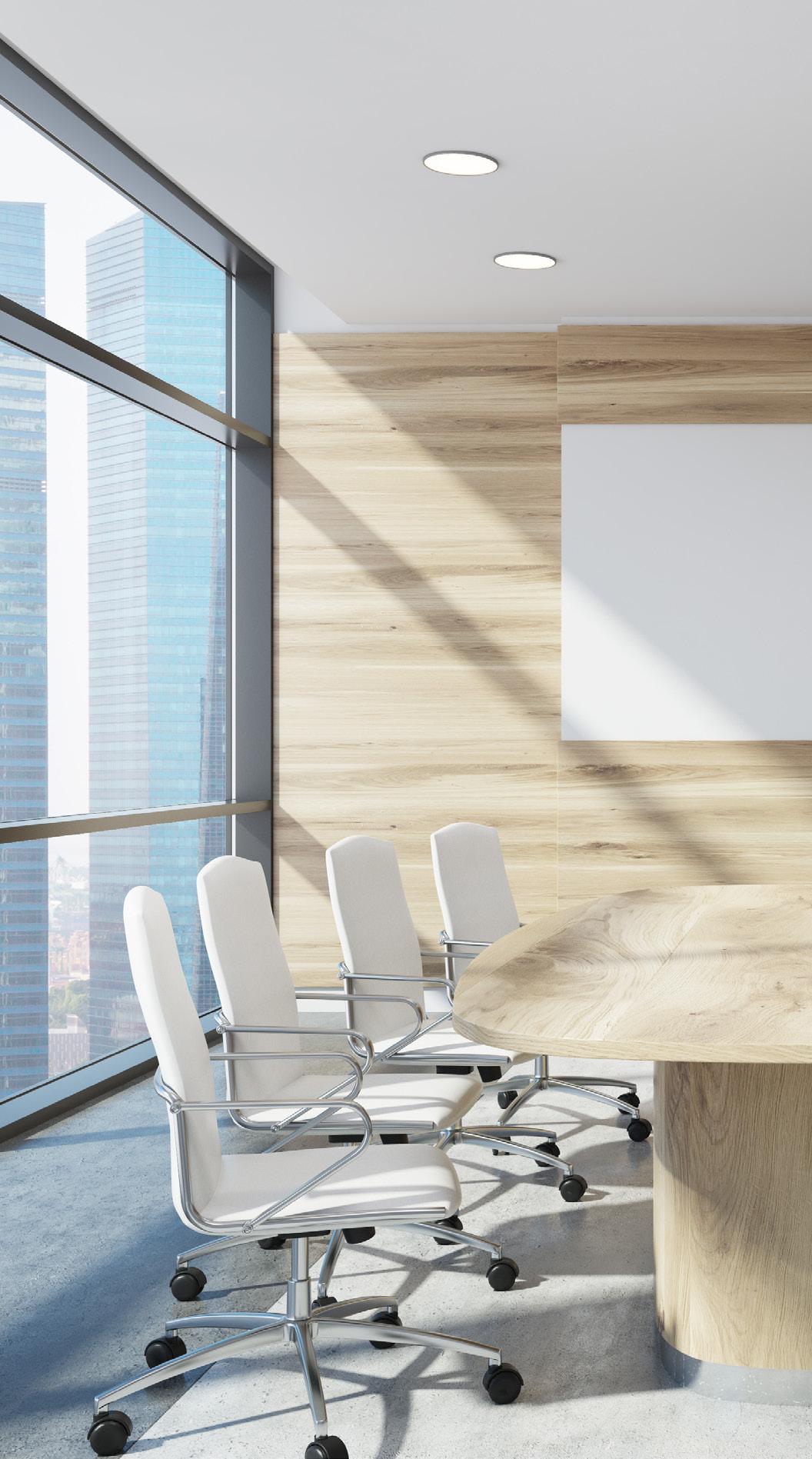
1 - https://www.bbc.com/worklife/article/20201023-coronavirus-how-will-thepandemic-change-the-way-we-work
2 - https://www.bbc.com/worklife/article/20201023-coronavirus-how-will-thepandemic-change-the-way-we-work 3 - https://www.flexjobs.com/blog/post/survey-flexible-work-moms/

Jenny Hicks
HEAD OF TECHNOLOGY

Jenny
Jenny
is positioned as Head of Technology for The Midwich Group working closely with all the group companies across the globe, providing trends analysis and exploring new technology ventures. With 12 years of industry expertise,
also represents the Group across the Globe as a thought leader, key note speaker and industry panellist.
“ “
The post-pandemic workforce will inevitably return to the office more health-conscious
VIEW PROFILE
Jenny Hicks, Head of Technology for Midwich Group.
tohowhost
Up until 2020, adoption of virtual meetings had been slow but steady. The pandemic caused a drastic shift with a sudden boom in online meetings, companies that may not have entertained this idea before, suddenly had to adapt to survive.
However, working from home is certainly not a new idea. Prior to the coronavirus pandemic, it was estimated that 1.7 million people in the UK worked from home1. The resulting lockdowns have amplified this with companies, mobilising staff to work remotely and productivity ticking along.
With more people working remotely, it is predicted that by 2024, in-person meetings will drop from 60% of enterprise meetings to 25%2. With this decrease in face-to-face meetings expected,
how can we make sure that the virtual meetings we are hosting remain dynamic?
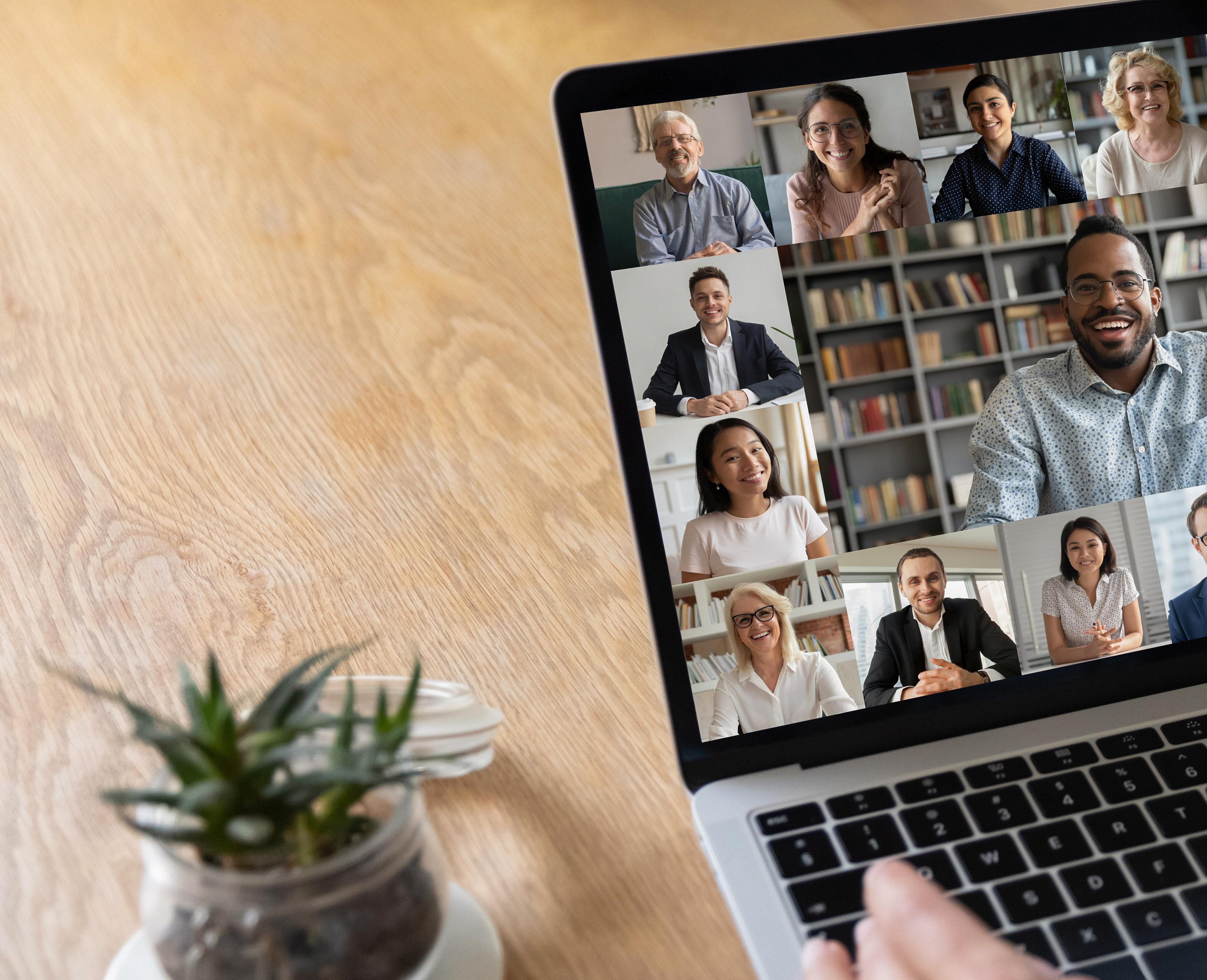

Prepare to plan
This applies to all meetings of course, but failing to plan for the meeting ahead will ultimately lead to an un-successful meeting. Create a structured breakdown of all the points you wish to cover in the meeting and stick to them. It is much easier to get distracted in a virtual meeting than in-person.
Don’t be afraid of chit-chat
Ensure, you allow time for general pleasantries at the start. When meeting in-person general ‘chitchat’ is often exchanged before the meeting starts, whether this is in the canteen whilst grabbing coffee for the meeting or in the meeting room itself, virtual meetings shouldn’t be any different.
1 https://www.businessleader.co.uk/how-many-people-in-the-uk-worked-from-home-prior-to-coronavirus-outbreak/81646/
Choose your communication platform
There are endless remote communication tools available, it is important you choose a platform that works for you, and your attendees. Familiarise yourself with the platform and it’s features so the meeting runs smooth and without technical hitches. Think about what activities are planned for the meeting and if your chosen platform can achieve these… And always have a plan B, for when those inevitable signal losses occur.
Video & audio etiquette
It’s no mystery that video and audio are key stakeholders in the success of a virtual meeting. Video is a great way to keep people engaged and feel like they’re really there with you. While your audio is what really keeps the meeting moving.
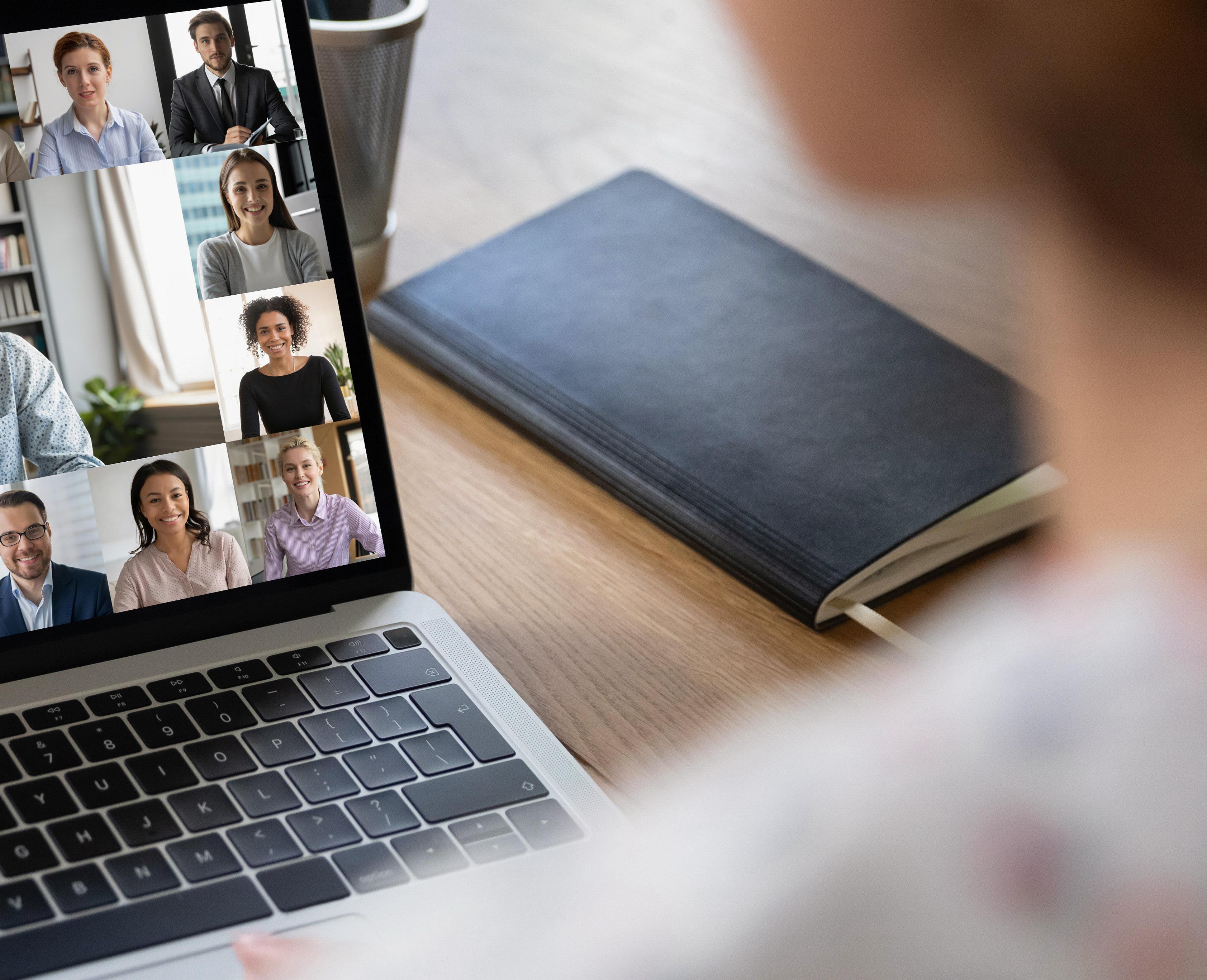
1. Ensure your camera is face on. 2. Light up your face so you can be seen. 3. Make sure your background is natural or blurred. 4. Invest in a desktop camera if your embedded camera isn’t good enough. 5. Check your internet is strong enough to power both video and audio in the meeting. 1. Minimise any background noise.
Mute your mic when you’re not talking.
Test your microphone before joining the call.
Invest in a headset if your embedded microphone isn’t good enough.
Mute email and messenger apps so your mic doesn’t pick up their notifications.
user-spending-on-cloud-based-web-conferencing-solutions-will-grow-nearly-25-percent-in-2020

2.
3.
4.
5.
dynamic
2
Top 5 Video Tips Top 5 Audio Tips
https://www.gartner.com/en/newsroom/press-releases/2020-06-02-gartner-says-worldwide-end-
virtual meetings
technological change embracing
CHRIS NETO TALKS TECHNOLOGY AND HOW TO ADAPT TO TECHNOLOGICAL CHANGE IN 2021
If you told anyone working in an office at the start of 2020 that later in the year the entire nation would working remotely and hybrid working would be widely adopted in 2021, they wouldn’t likely trust your prediction.
Chris Neto, Market Development Manager at Starin, has been in the industry for 23 years. Over these decades, he has seen the workforce evolve alongside the technology industry, with the pair influencing one another.

Personally, what do you miss most from the pre-pandemic world?
I personally miss live events, like InfoComm the most. You can move the education online, but you cannot replace the hands-on experience or the networking that comes with an in-person event.
Which upcoming technology trends do you think will be biggest?
Whereas pre-pandemic we saw technology changing the way we worked and leading changes, that will shift to safety and society’s needs driving technology for a change.
Bigger displays, better meeting room audio and sanitation stations will all play a big part in the


“Return to Office”. This technology will transcend meeting spaces and will also play a part in digital signage, queuing, contact tracing, site access and remote work.
Distance learning and enhancing work-from-home environments mean that commercial products may shift into greater use in the residential side of the business. Also, the evolving needs for teachers to have a range of options to deliver their class materials will drive in-room solutions within education environments.
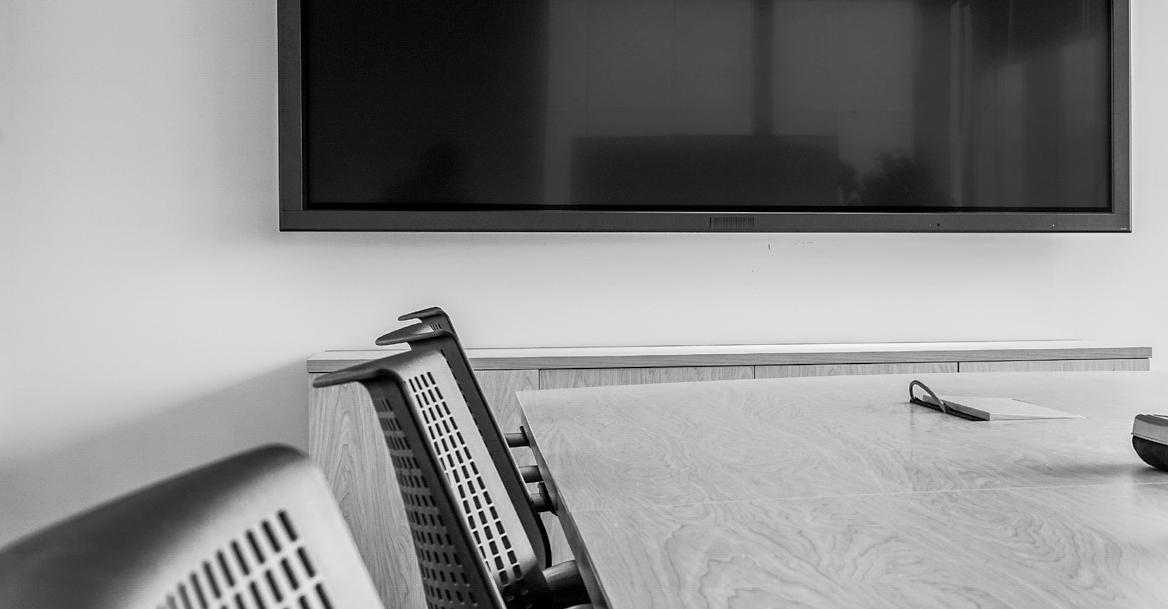
Is there any advice you can give for adapting to change in this world?
Lack of agility and empathy is the worst mistake anyone can make.
Agility in business goals, finance and even marketing is key for any business at this time. Empathy will continue to play a major part in business with both customers and employees as we navigate these uncertain times.
Together agility and empathy can help business not only survive but thrive. We have to continue to have an attitude of helping and encouraging others and moving forward together as an industry with a positive mindset.
in 2021 embracing
When you first started in the AV industry it must have looked very different. What has been the biggest change you’ve seen in the past 12 months?
The biggest changes to the industry have come in the past 12 months. COVID has ignited the remote learning/working renaissance. Both were always present in our industry, mainly something we sold to our customers, but in 2020 we as an industry had to adapt….and drink our own “kool-aid”, so to speak.
In those 12 months, what’s been the biggest change you’ve seen to the AV the industry?
The biggest impact to our industry in the past 12 months has been the suspension of live events. It may take some time but this vertical will return strong. Many segments and verticals have struggled, others like digital signage have become stronger, and on point I’m hopeful it will all balance out. But clearly live events, rental and staging and to some degree house of worship are verticals that are still struggling with no return to normal in sight for the foreseeable future, and this was a segment of AV that was booming a year ago.
Could you tell us what to expect the post-pandemic workspace to look like?
Unified communications have revolutionized how businesses work, these practices will continue to grow and evolve, as we all get used to working efficiently in a post-pandemic word.
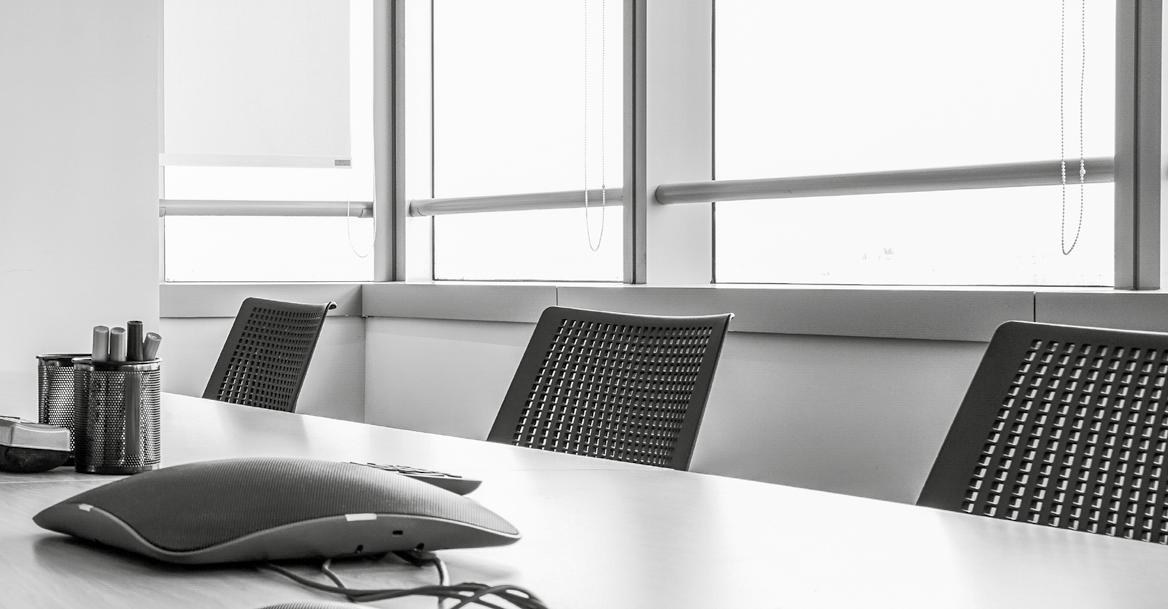
You’ve been in the AV industry for 23 years, can you tell me what you love most about working it the technology industry?

I am a tech junkie at heart, so what I love most about the industry is when we as AV professionals get creative in our solutions. If you look at my LinkedIn activity it is me engaging with posts about exciting and innovative solutions.

Alongside the playful, creative side of AV, I also adore the community of AV professionals and hearing their stories of how they found their way and home within AV. There is not a traditional career path into AV, so we are a melting pot of all kinds of interesting and relevant skill sets.
And what is it that you find most frustrating?
The most frustrating part of AV is realizing that technology changes faster than the mindset. Education is so important to show clients and end-users how our solutions make their lives better.
It’s no mystery that collaboration is paramount to business productivity and efficiency in the office. However, with the recent COVID-19 pandemic, employees have been working from home, which requires a switch in collaborative technologies to support the new working world.

Cue the DTEN ME…
The DTEN ME is an all-in-one personal collaboration device. Offering a brand-new Zoom for home experience. This 27” device offers a collaborative solution for video meetings and phone calls enabling interactive whiteboarding and annotating.

Easily login with your Zoom user licence for one-touch:
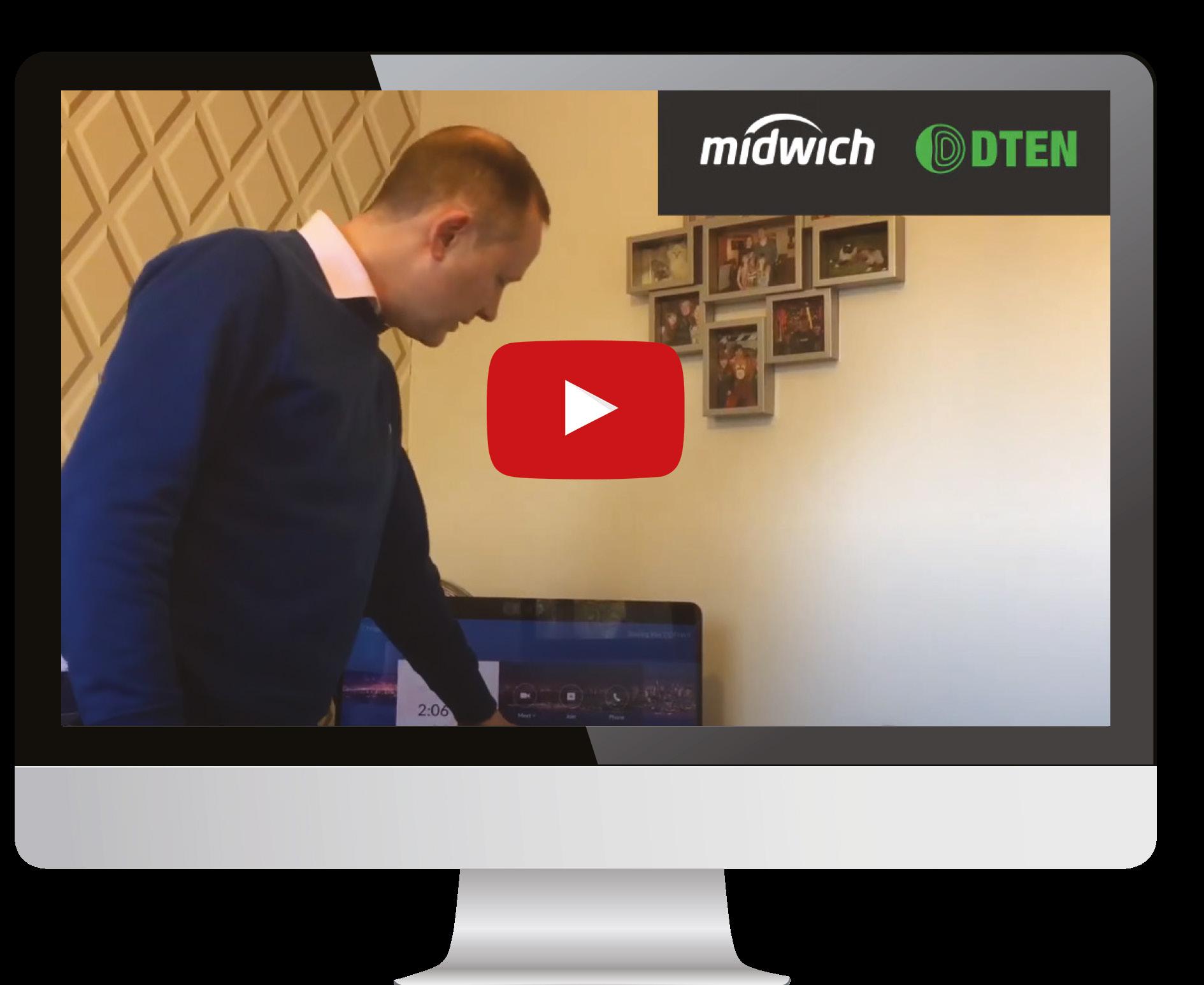
o Video meetings
o Crystal clear phone calls
o Seamless content sharing
o Interactive whiteboarding

o Annotations
Don’t worry about your art skills, this smart device will automatically correct any handdrawn shapes or lines into what it guesses you are trying to design.
Where would I use the DTEN ME?
The whiteboarding and annotation features promote easy working and learning from home. The combination of the 8-microphone array and quad speakers allow for harmonious meetings from your desktop. An ultraresponsive multi-touch display play to everyone’s advantage, streamlining day-to-day usage and rivalling in-person meetings.
Low cost and easy to set up, the DTEN ME works with your own personal Zoom account, meaning it’s free of charge and requires minimal integration. With a 1-sheet instruction manual, a power cable and the 27-inch DTEN ME PCAP touch screen, you’ll be up and running in minutes!
If you are planning on making calls longer than 40 minutes you will need to upgrade your Zoom account, but don’t worrythe DTEN ME works on any zoom licence.
Would you recommend?
We would 100% recommend this product to enhance your home office. The only drawback is that the DTEN ME isn’t suitable for multiplatform use, it is exclusive to Zoom. Simple, easy to install and easy to use, the DTEN Me solves numerous call problems and simplifies the pre-call panic.
Amazing features at an affordable price.
AN ALL-IN-ONE SOLUTION PERSONAL COLLABORATION DEVICE
All-In-One Collaboration
Everywhere
DTEN builds innovative communications technology creating the ideal environment to communicate and collaborate. Their award-winning collaboration solutions that combine all-in-one cutting-edge features, plug-and-play ease, high quality performance and affordability.

DTEN’s Zoom certified appliances and integrated service subscriptions revolutionize the way teams around the world connect, communicate, and collaborate. Whether you are looking for an all-in-one device for a personal workspace or boardroom, they a solution.



ARE YOUR MEETING SPACES READY FOR
POST-PANDEMIC WORKFORCE?
The Coronavirus might have its foot on the accelerator, but it’s not necessarily in the driving seat. Even before the crisis, businesses were trending towards flexible and remote working.
To provide flexibility, businesses are adopting a hybrid approach to balance remote and in-office working that works for both employees and employers. The key to this approach is to make sure in-person meetings feel worth the time and that spaces support productive working.

Below we cover key considerations businesses need to make as they enhance meeting spaces to welcome back workers, safely.
Fixed or flexible spaces – Decide if you have the space for a dedicated meeting room, or whether cost and space concerns mean you’re better off with a flexible multi-purpose space. A more flexible arrangement will enable businesses to quickly adapt and manage spaces according to usage and changing Covid-safety guidelines.
Optimised usage – With space at a premium, room management tools help optimise usage by identifying underutilised rooms and equipment. Parameters such as temperature and air quality can be monitored and controlled to maintain a conducive and safe working environment, and cleaning teams can be alerted to sanitise the room between occupants.
Favourable furnishings – An airless, windowless box with drab décor and uncomfortable chairs will make meetings a penance. Select the right furniture, lighting and aesthetic elements to improve the meeting and collaboration experience but be mindful of easy-clean surfaces.

A
Acoustic insulation – As workers return to shared spaces after enjoying a dedicated space at home, this will be an important consideration. By designing spaces with sound-absorbing panelling or using meeting booths that incorporate acoustic insulation, you can deaden noise transfer to avoid annoyance and distraction during video calls.
Common user experience – Replicating the technology across multiple locations supports a common user experience and technology familiarity. Simple, frictionless technology will be key with many organisations needing to enable interoperability across multiple platforms whilst maintaining security.

Quality sound & vision – Both audio and video are essential in equal measure when supporting hybrid meetings. With so many devices and peripherals to choose from, going for a solution which has been certified by Microsoft or Zoom offers the peace of mind that compatibility between vendors is already proven to generate a high-quality user experience.
BYOD connectivity – Whatever the space layout, the focal display in the room needs to be easy to use and easy to connect to securely, either wirelessly or via cables. Meeting room participants are likely to favour using their personal devices so there must be support for BYOD.

True collaboration - Sometimes video and audio aren’t quite enough so think about software platforms that will enable real time collaboration. Digital whiteboarding and agile workflow tools that are cloud based and accessible from any device, anywhere, are the tools that will drive true collaboration beyond just video.
Actionable outcomes – When great things happen in meetings, it’s important to have the tools in place that capture the critical insights visualised on the whiteboard. Don’t just trust people taking notes on their devices; invest in platforms that enable you to make a record of meeting discussions and outcomes, so that you can quickly track actions and make references in future meetings.
Simon Hayes
MEETING SPACE & COLLABORATION SPECIALIST SHARP/NEC
Simon Hayes works in the Meeting and Collaboration Solutions team at Sharp/ NEC. He has over 20 years’ experience in the AV industry and drives NEC’s meeting space solutions into global enterprise accounts. Simon’s top display for Spring 2021 is the InfinityBoard® which is an all-in-one collaboration solution combining UHD touch display, Huddly IQ camera, speakers and software.

VIEW
PROFILE
BYOM
THE KEY TO SEAMLESS AND POWERFUL PRODUCTIVITY
Unlocking productivity in meetings has never been as important as it is today. With virtual meetings now common place, we need to consider how we can boost productivity without stifling creativity. So, how can a business encourage both productivity and creative thinking at the same time and from anywhere?
Creativitycomesfromspontaneousmeetings, from random discussions. You run into someone, youaskwhatthey’redoing,yousay‘wow,’and soonyou’recookingupallsortsofideas.
-Steve Jobs, Founder of Apple
Equipping huddle spaces and meeting rooms in an office with the capability for spontaneous meetings, staff can make the most of their collaborative time and create a bigger impact for the business. With BYOM (Bring Your Own Meeting), employees can meet physically or virtually seamlessly, whether it’s a spontaneous or scheduled meeting.
What is BYOM?
BYOM is a meeting solution that allows participants to use their own devices. The agnostic meeting room technology responds to a participant’s device allowing them to be the centre of the meeting. Once set up, this
solution allows for meetings to start instantly and with the familiarity of one’s own device.

Piecing Together a BYOM Solution
For a BYOM solution to be effective, staff need to be able to enter a meeting space and cast their screen to the meeting room display as well as connect to the peripherals in the space. This would allow them to collaborate seamlessly with physical and virtual attendees through their own laptop or device.
It’s important to consider BYOM technology that is agnostic. This will connect with existing displays, cameras, and microphones in the room as well as personal devices, no matter the brand or software used.
Your solution should also be fully secure, allowing it to fit with existing IT infrastructure without compromising network security.
Finally, consider how you can maximise your budget. Find the right BYOM tools that will provide an intuitive experience that boosts productivity without breaking the bank.
BYOM shifts how we should think about our meeting solutions. We no longer need to work around the limitations of technology but can create a flexible and agnostic space for productive meetings.

“ “
Enjoy interactive, wireless conferencing

with ClickShare Conference CX-30
Let the new ClickShare Conference CX-30 transform your meetings. Gone are the frictions when you host a conference from your laptop, or the struggle trying to use cameras and other meeting room equipment. Simply launch the ClickShare Collaboration App or plug in the ClickShare Wireless Conferencing Button. In less than 7 seconds you are ready to go. Enjoy collaboration with touch-enabled interactivity features, moderation, local view of the room display.
Let the new ClickShare Conference CX-30 transform your meetings. Gone are the frictions when you host a conference from a laptop, or the struggle trying to use cameras and other meeting room equipment. Utilise a laptop as the window to the world from wherever you decide to have a meeting. Simply launch the ClickShare Collaboration App or plug in the ClickShare Wireless Conferencing Button and start a meeting in less than 7 seconds.
15
barco.com/clickshare
work smarter
PREMIUM UC SOLUTIONS FROM HUDDLY & MERSIVE

Smart AV technology allows meetings to start on time, with the equipment using built-in software to take the pressure off manually setting up your meeting space technology. Our premium UC solutions from Huddly and Mersive utilise Solstice Conference to offer seamless integration with existing meeting room technology, calendar and conferencing services to enable a one-step meeting start.
Often installed meeting room cameras capture the whole room regardless of if the room is at full occupancy or not. For a more professional look attendees need to manually set the camera frame and are then limited on movement. Smart cameras, like Huddly IQ, use AI to enable ‘Genius Framing’. This software is intuitive and can adjust the shot to smoothly reframe the meeting as an attendee leaves or joins. The AI technology can also count the number of attendees in a meeting. As well as delivering dynamic light optimisation to improve the lighting conditions of any meeting space.
Previously behaviour analytics in AV technology was feared and seen as unwanted spyware, however, the pandemic has forced employees to revaluate their viewpoint on this technology and it is now being used to form ‘welfare technology’. Analytic technology helps maintain hygiene levels in office buildings. Desk sensors, facial counts, temperature scanners, etc. are no longer viewed as big brother gathering information, instead they are seen to help ensure buildings are safe.
Face count technology in meeting spaces helps
to identify how many people are in a room and whether it is at a safe occupancy level. Huddly cameras paired with Mersive Solstice can also be enabled as occupancy counters, and metrics such as peak and average hourly occupancy can be viewed using Solstice Cloud Analytics.
This technology will also be used to help inform building managers on how meeting spaces are used, analytics will show if a large board room is regularly being used by only a few employees.
Decisions can be made to divide rooms into smaller meeting spaces that better fit the needs of the employees.
Historic conferencing systems solely focused on audio conferencing only, whilst this is an important aspect of hybrid and video meetings, attendees need to be seen and heard. Upgrading your camera adds another dimension to your hybrid and virtual meetings, it’s important that both video and audio is clear, so that meetings both look and sound professional. Don’t forget to pair your conference camera with a professional speaker and microphone.
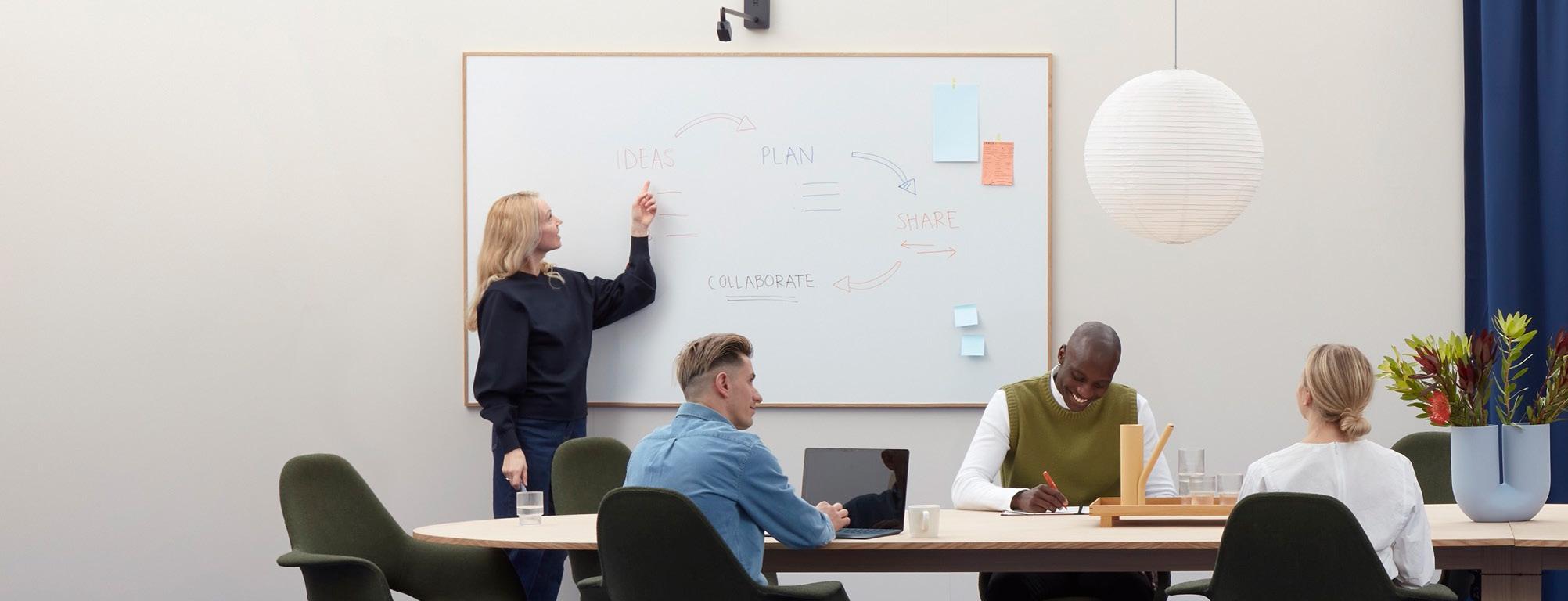
TopTip:Investinbrandsthathavepartneredto createmeetingsolutionsthatworktogether. Thiswillminimiseanyissuesyouhavepairingthe devicesorgettingthemtoconnecttothemeeting software.HuddlycamerasandYamahamicrophonespeakersystemspairtogethertomakepremium meetingroomkits.
not harder
Combining smart cameras with wireless collaboration solutions ensure that meetings not only look good, but that they are actually productive. Everyone, both onsite and remote meeting attendees can share content and new agnostic solutions eliminate barriers created from users bringing different branded devices, transforming BYOD into BYOM.
Hybrid meetings should be as productive, if not more, than virtual meetings. Businesses cannot afford to regress when they return to the office. Employees have gotten used to circling elements of the screen with

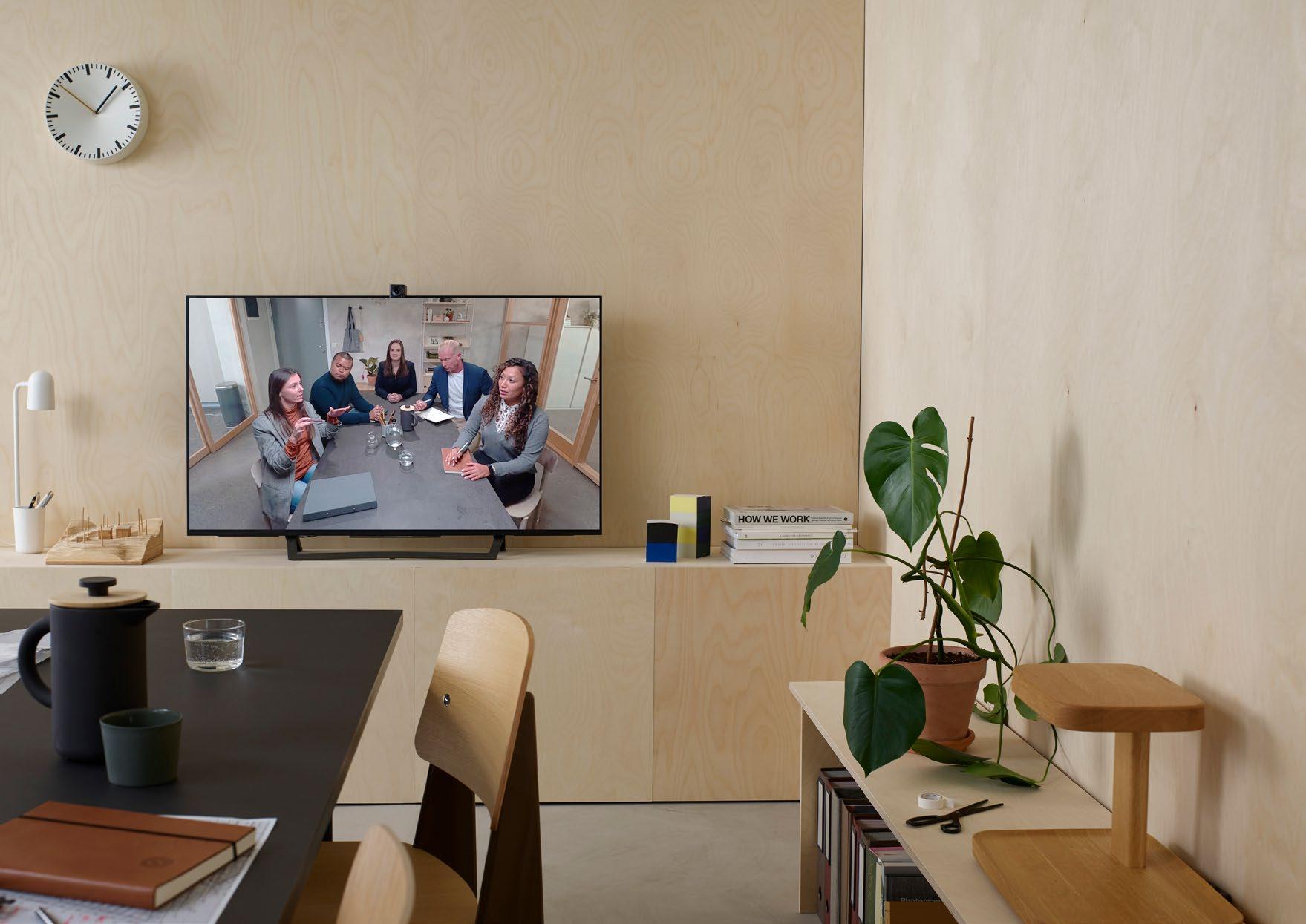
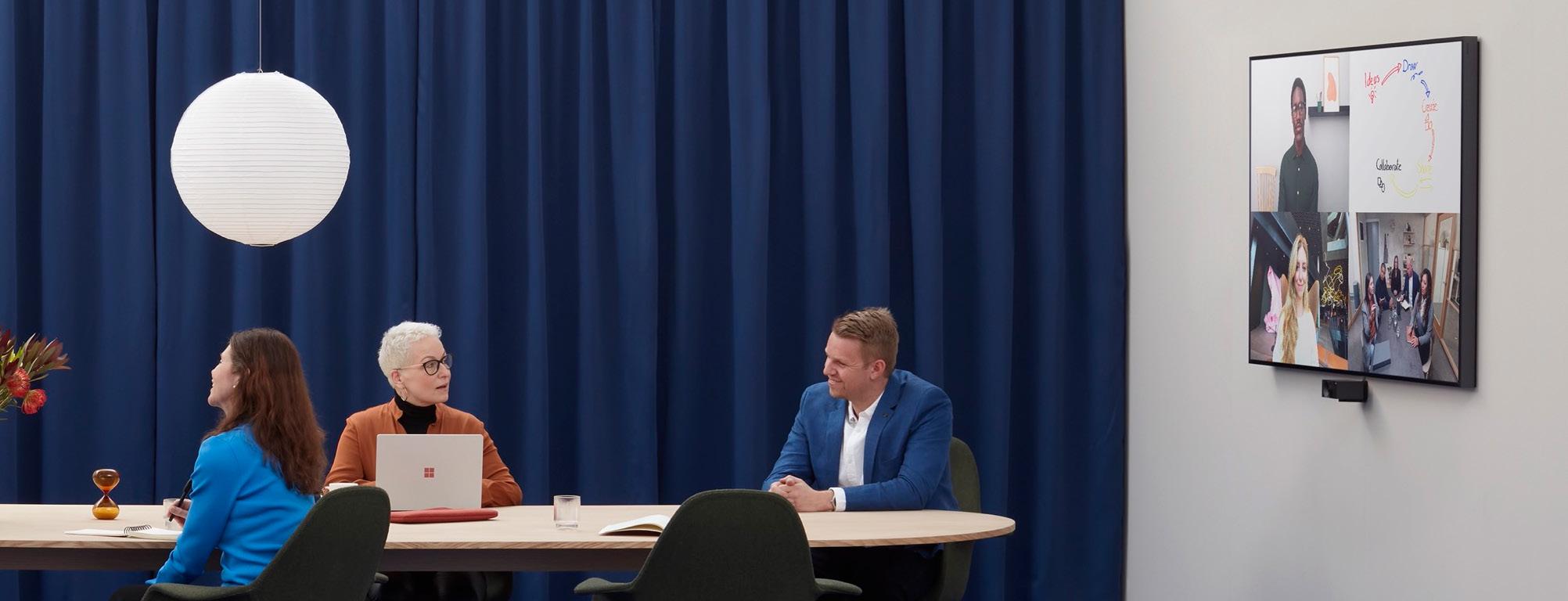

their mouse and seeing attendees’ reactions, even when someone has shared their screen.
The collaboration solutions offered by Huddly and Mersive bridge the gap between in-person and virtual meetings with hybrid meetings. Mersive’s wireless annotation tool, Solstice Ink enables users to highlight and mark-up content displayed in room, then share with remote participants using Solstice Conference to agnostically bridge the conferencing service of their choice.
Built
ideas
150 degree wide angle cameras Groundbreaking AI features Team collaboration anywhere Across all video platforms
for
.
Contact your account manager for more information Perfect for Zoom, Microsoft Teams and google Meet
b
ig
with more people than Teams allows meet
In the history of the human race, there have never been so many ways to reach a dispersed audience, advances in technology and the internet have enabled an infinite number of participants on a call.
Over the last year, Zoom and Microsoft Teams have moved from occasional use platforms to arguably the most needed applications for collaboration. These tools are amazing for reaching audiences of a certain size with up to 100 people available on standard Zoom, and up to 250 on Microsoft teams. If this is the audience size that you want to engage with then Teams and Zoom could be what you need. It’s easy to plug in cameras and stick production systems into Teams and Zoom. The problem is you need to invite your audience and schedule events in diaries.

Before the internet, a Canadian communication theorist Marshall McLuhan coined the phrase ‘The medium is the message’. This could even be more relevant today than it was when he wrote it in 1967. Teams and Zoom have their place but the best way to reach a large audience is through the beasts that are YouTube and Facebook.
Servers at YouTube and Facebook have replaced the TV transmitters of previous broadcast infrastructure to ensure that your video stream can reach the maximum number of people.
They effectively act as a good old-fashioned amplifier, without this type of infrastructure one video encoder box can only send picture to a couple of screens but with them, you can reach millions.
The problem with today’s world is there are so many different platforms competing for your audience’s attention. The easiest way to combat this is by ‘transmitting’ on as many different channels at once. Streaming video to Facebook, YouTube, Instagram, Twitter, and LinkedIn simultaneously will ensure a bigger audience, as long as they want to hear what you have to say.
In 2012 the world record was set for the mostviewed live-streaming event in YouTube’s history. To this day, the most-views live-stream remains the 2012 space jump by skydiver Felix Baumgartner, which more than 8 million people watched live on YouTube worldwide.
This technology has transformed from competing with traditional TV channels and has been recently adopted by businesses and educations sectors. Universities that used to house large lecture halls with hundred of students have had to adapt and offer online lectures. Similarly businesses that offered seminars or even company update meetings have had to move online and stream these services.

Unlocking workplace flexibility with...

...Hardware as a Service
Hardware as a Service combats the upfront costs of purchasing the latest technology, the impending obsolescence if the technology requirements change and the hassle of maintenance through its lifecycle. Not to mention it is also cheaper than upfront purchasing or leasing!
Hardware as a Service (HaaS) is a rental subscription, like leasing or licencing, in that the hardware belongs to a managed service provider (MSP) or finance company and is installed for a customer with a service level agreement (SLA) that defines the responsibilities of both parties on a rental basis with no capital investment.
This model allows companies to access the latest technology from day one, while managing costs over lower monthly repayments. Repayments are defined up front and fixed over the term meaning companies can easily manage their budget and can scale up or down in line with their workforce needs. This model helps businesses remain up to date with state-of-theart technology, without the large upfront costs associated with an outright purchase.
At the end of a traditional lease the equipment is owned by the end user who has paid the full price over the term of their agreement and is left with old technology. Hardware as a Service offers multiple end-of-term options and flexibility at the end-of-term to renew the agreement, return the equipment or select a new system.
As we begin returning to the workplace, meeting spaces need to adapt to facilitate hybrid meetings. However, it can be hard to gauge the productivity enhanced from new, innovative hardware and the importance of this investment. Offices can also feel anticipation to upgrading a meeting room as technology soon becomes obsolete and is replaced by newer, better, shinier things. Hardware as a Service helps solve this problem, this solution offers cutting-edge technology with flexible upgrade options at an affordable monthly price.
An advantage of renting is that it gives you flexibility to upgrade to the latest equipment in line with technological advances. This means you can acquire the equipment your business needs now, while easily upgrading to newer assets during the term and remain ahead of your competition.





















Create a meeting space that suits all your needs. Build your meeting space




 Hannah Moody | Editor
Hannah Moody | Editor




















































